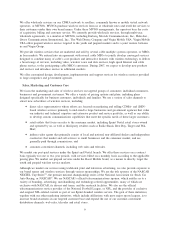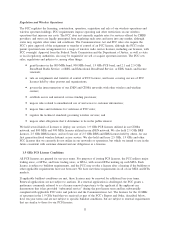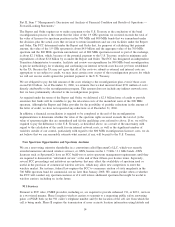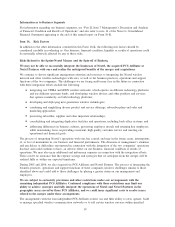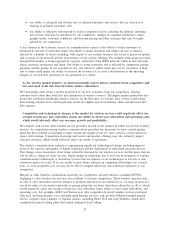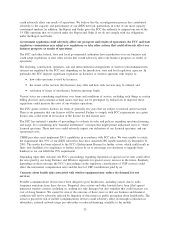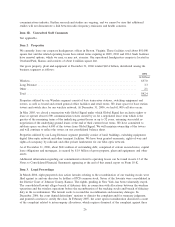Sprint - Nextel 2006 Annual Report Download - page 18
Download and view the complete annual report
Please find page 18 of the 2006 Sprint - Nextel annual report below. You can navigate through the pages in the report by either clicking on the pages listed below, or by using the keyword search tool below to find specific information within the annual report.protection laws against sales practices and services of wireless carriers. States also may impose their own
universal service support requirements on wireless and other communications carriers, similar to the contribu-
tion requirements that have been established by the FCC. We anticipate that these trends will continue. It will
require us to devote legal and other resources to working with the states to respond to their concerns while
minimizing, if not preventing, any new regulation and enforcement actions that could increase our costs of
doing business.
Regulation and Wireline Operations
Competitive Local Service
The Telecommunications Act of 1996, or Telecom Act, the first comprehensive update of the Communications
Act, was designed to promote competition, and it eliminated legal and regulatory barriers for entry into local
and long distance communications markets. It also required ILECs to allow resale of specified local services at
wholesale rates, negotiate interconnection agreements, provide nondiscriminatory access to unbundled network
elements, or UNEs, and allow co-location of interconnection equipment by competitors. The rules implement-
ing the Telecom Act remain subject to legal challenges. Thus, the scope of future local competition remains
uncertain. These local competition rules impact us because we provide wholesale services to cable television
companies that wish to compete in the local voice telephony market.
We provide cable companies with communications and back-office services to enable the cable companies to
provide competitive local and long distance telephony services primarily in a voice over IP, or VoIP, format to
their end-user customers. We are now providing these cable services in a number of states while working to
gain regulatory approvals and obtain interconnection agreements to enter additional markets. Certain ILECs
continue to take steps to impede our ability to provide services to the cable companies in an efficient manner.
However, regulatory decisions in several states may speed our market entry in those states.
Voice over Internet Protocol
With the increasing availability of VoIP services, the FCC continues to consider the regulatory status of
various forms of VoIP. In 2004, the FCC issued an order finding that one form of VoIP, involving a specific
form of computer-to-computer services for which no charge is assessed and conventional telephone numbers
are not used, is an unregulated “information service,” rather than a telecommunications service, and preempted
state regulation of this service. The FCC also ruled that long distance offerings in which calls begin and end
on the ordinary public switched telephone network, but are transmitted in part through the use of IP, are
“telecommunications services,” thereby rendering the services subject to all the regulatory obligations imposed
on ordinary long distance services, including payment of access charges and contributions to the universal
service funds or USF. In addition, the FCC preempted states from exercising entry and related economic
regulation of interconnected VolP services that originate through the use of broadband connections and
specialized customer premises equipment. However, this ruling did not address specifically whether this form
of VoIP is an “information service” or a “telecommunications service,” or what regulatory obligations, such as
intercarrier compensation, should apply. Nevertheless, the FCC requires interconnected VoIP providers to
contribute to the federal USF. The FCC also requires interconnected VoIP providers to offer E911 emergency
calling capabilities to their subscribers.
High-speed Internet Access Services
Following a June 2005 U.S. Supreme Court decision affirming the FCC’s classification of cable modem
Internet access service as an “information service” and declining to impose mandatory common carrier
regulation on cable providers, the FCC issued an order in September 2005 declaring the wireline high-speed
Internet access services, which are provided by ILECs, are “information services” rather than “telecommuni-
cations services.” As a result, over time ILECs have been relieved of certain obligations regarding the
provision of the underlying broadband transmission services. The FCC is considering similar deregulation of
wireless high-speed Internet access services. Such deregulation could result in less regulation of some of our
EV-DO and WiMAX products and services. Deregulation of broadband services has sparked a debate over
16


